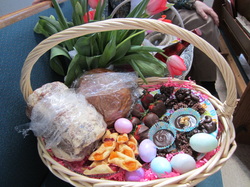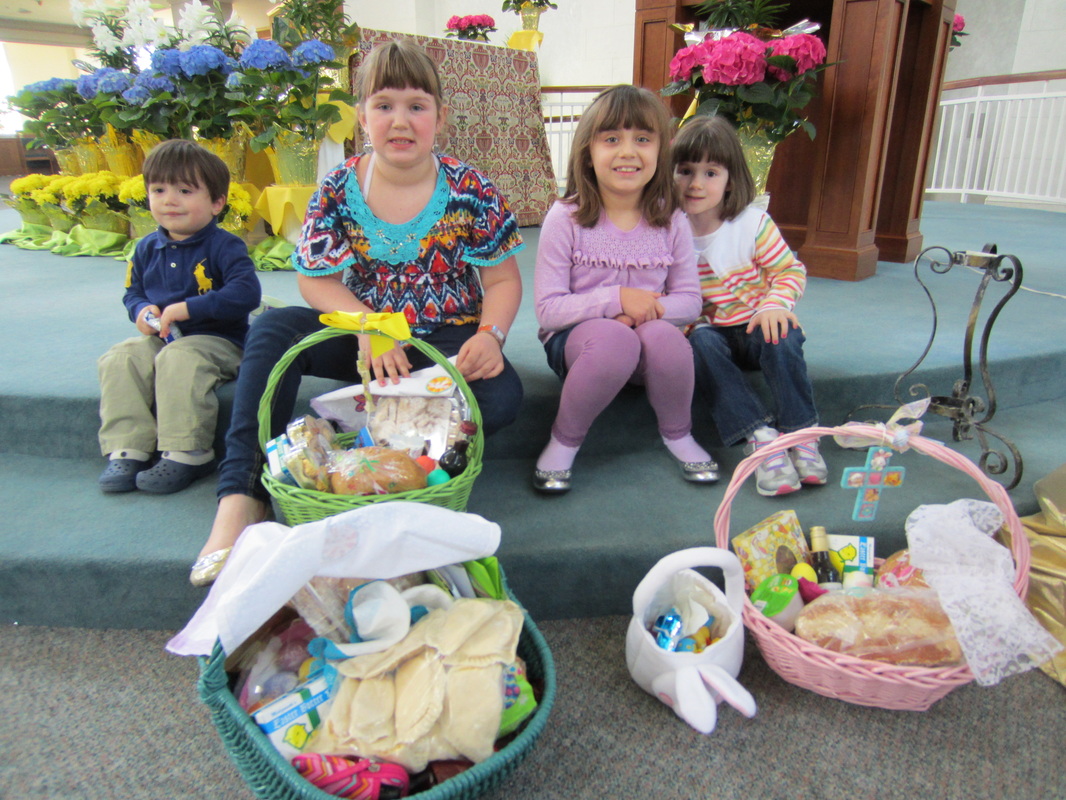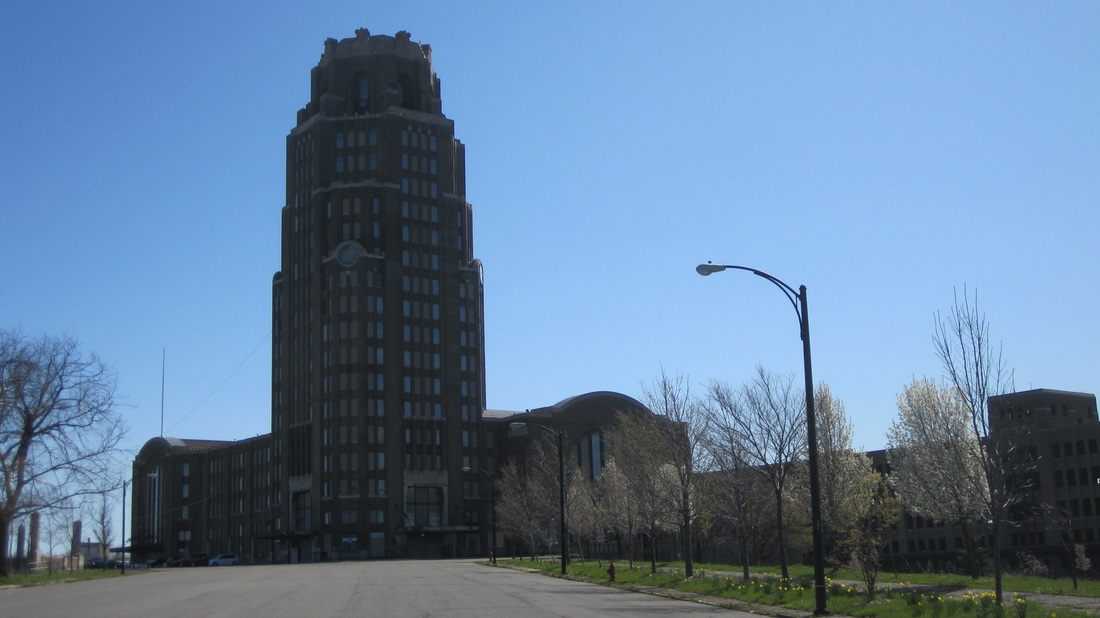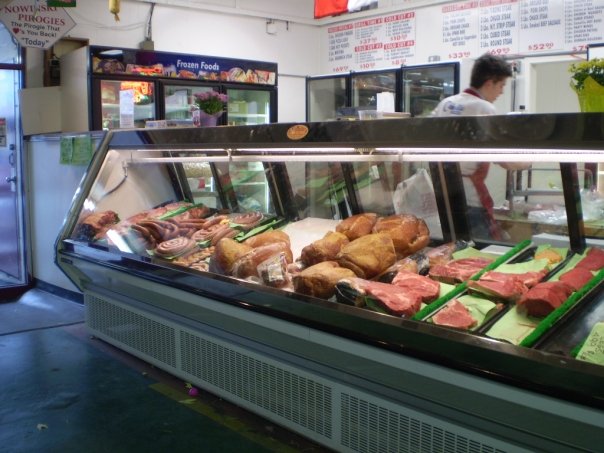The Auschwitz complex, situated in the Polish town of Oświęcim, is an hour west of Krakow, and is easily accessible by rental car or tour bus. The three largest locations, Auschwitz I (the Main Complex), Auschwitz II: Birkenau and Auschwitz III: Buna-Monowitz were accompanied by another 45 sub-camps, factories and mines to make up the entirety of the Auschwitz concentration camp and extermination system. Today, most tour operators only include transport to Auschwitz I and II as these sites were the most inhabited.
Guided by a graveled and dusty path, the infamous "Arbeit Macht Frei" sign welcomes you into Auschwitz I. The atmosphere is still, silent, and solemn. As headsets are given to patrons as an informal guide, there is no trace of a live voice. Everyone is immersed in their imagination seeing shadows of souls long-time passed peering out empty windows, along darkened hallways, through wired fences. Their hallowed cheeks and sunken eyes follow you with an expressionless gaze. You are retracing their steps, the steps of the dead.
The buildings within this complex were once home to Nazis and prisoners alike. Experimentation, torture and death mixed with plans of extinction and absolute power seep out of the pores of the walls and fill you with feelings of utter emptiness. Now they house display cases and corridors filled with documents, photographs, and statistics along with hopeful pieces of luggage, prosthetic legs, shoes, eyeglasses, and religious cloth. The Black Wall of execution and Block 11, a place of severe torture, can also be found here.
Auschwitz II: Birkenau is two miles from the Main Complex and is known as being the location where "the Final Solution" was at its highest unrelenting level. The aged iron tracks once dictating the fate of thousands upon thousands of prisoners lead your steps to the back of the camp where the crematoria once stood. In 1944, a brave group of prisoners
self-titled the Sonderkommando revolted against German forces, burned Crema IV and attempted escape. Astonishingly enough, of those who rebelled there were some survivors, but not many. Before the Allied forces had the chance to arrive in 1945, Crematoria II,
III and V along with "The Little Red House" had been razed to the ground and plowed over in efforts to destroy all evidence. Today, only the ruins of "The Little White House" remain.
Some 67 buildings are scattered throughout barren 400 acres and chimneys that survived the SS burnings stand defiantly into the sky. Entering through the nail-scratched doors, it’s difficult to imagine eight hundred people fitting into a barrack intended for 52 horses.
The Auschwitz tour is a terrifying, bone-chilling experience; however it is sobering and essential for all to see. Years ago, my sixth grade class was visited by a survivor of Auschwitz who recounted his time within the camp. He mentioned George Santayana’s
quote, "those who cannot remember the past are condemned to repeat it." Though we heard these words and listened to his story, as 11 year olds, I don’t think we truly understood what any of it meant. I don’t think I really understood the magnitude of this quote or the remarkable strength and courage of this man until I saw this "hell on earth" with my own eyes.
It is a hard excursion to internalize, but we owe it to the survivors and victims’ alike to learn their stories, to understand their difficulties and pains; it would be shameful not to. In the articles that follow, we must remember that ours and other’s freedoms were not made easily; many fought and died so that we could live in peace. If we cannot remember the darkness of the past, how can we possibly expect to create a brighter future?
Stay tuned for our next article, From Color to Darkness
 Check out an article by Harold McNeil and Michelle Kearns of the Buffalo News for a look on the day's festivities! Also, here is another article by Michelle Kearns which gives a bit more of the history of Dynus Day celebrations in Buffalo.
Every Holy Saturday my mom and I spend our morning preparing our Easter baskets for the Easter basket blessing known as swieconka (shvee-TSON-ka). A tradition that is exclusively Polish, this blessing celebrates the Resurrection of Christ and the ending of Lent. In lieu of the Easter bunny, the Lamb, the symbol of Christ, takes the spotlight usually in butter form known in Polish as “baranek” (ba-RON-ihk, lightly roll the “r”). And of course we have to get our ingredients from the Broadway Market (see neighboring article). 
Into our main basket goes: a baranek, fresh and smoked kielbasa, ham, eggs, horseradish, mustard, ketchup, bread, salt and pepper, and wine (this year there is an added "Elephant's Ear" and Pączki or a Polish donut).
| 
Into the goodies basket (which is typically loaded) goes: chocolate covered fruits (strawberries, pineapple) and nuts (peanuts, cashews, and walnuts), our chocolate Easter bunnies from Kelly’s Country Store and sponge candy. Need I say that our family likes chocolate?
| It’s a nice, simple tradition that my mom and I have come to cherish through the years. The blessing is only 15 minutes long at your nearest Catholic church, though you might need to touch base with the priest as not all churches offer this blessing.  (Left) Nancy Korkuc and Maribeth Mroziak present their newly blessed baskets. |  Dylan and Ella Zaremski share their Easter traditions with visiting cousins Madison and Abigail Depp of Ohio. |
Dyngus Day 2012: so much fun. With all of the venues playing host for this annual Polish celebration throughout the “Historic Polonia” section of East Buffalo (as well as its surrounding suburbs of Cheektawaga and Depew), it seemed practically impossible to not have a good time. I spent most of my evening at the Central Terminal but hopped over to Corpus Christi Church (Clark St, Buffalo) for a few dances and then on to the Hearthstone Manor (Dick Rd, Cheektawaga) where I polka’ed myself into a frenzy. (Check out the official site here for further Dyngus information) Yes, it was cold. Yes, I was whipped by pussy willows and sprayed with water (I thought my hair would freeze as I was waiting in line for the bathrooms outside the Terminal). Yes, I drank Tyskie (not really a beer I recommend as the Polish are known – and should only be known, alcoholically – for their vodkas). But boy oh boy! There were thousands of people proudly wearing the red and white colors of Poland everywhere you looked; it was like a sea of Polish pride – and I loved it. Those Idiots provided the soundtrack for the evening with their music filling every crevice of the Terminal. Mouth-watering food was available for purchase with a menu that included cheese pierogies (pia-RUG-gee, roll the “r”), kielbasa and sauerkraut, fried bologna and onions, Gołąbki (guh-WUMB-ki) and potatoes. The line for food took about 20 minutes to get through but the wait was worth every lip-smacking bite. My only negative from my time at the Terminal was the lack of dancing. Maybe there was dancing going on closer to the stage, but I didn’t see any when I passed earlier. Onto the next venue!  Cheese pierogies and Polish sausage with sauerkraut |  People come in from all over the country to visit family and friends for Easter. Here is Nicole LaMonte, visiting from Las Vegas, on her first Dyngus Day! |  Central Terminal, Buffalo, NY | Walking through the East Side of Buffalo at night, even on a “holiday” night is not the best idea but I was with another girl friend and four others guy friends so I thought myself safe enough. Walking into Corpus Christi’s Social Center, immediately we heard music. Heading right towards the source, the song changed and went into that famous wedding polka song we all know, The Chicken Dance. At that point of the night, the crowds were starting to die down so dance floor was wide open. My friends and I joined an older gentleman (maybe about late 60’s) and started the routine dance steps. As the song increased in speed, so did our motions and it soon became glaringly apparent that this gentlemen was a seasoned veteran – much better than we were! In the chorus of the song, he was the one leading us round and round in the circle to a speed that felt like side-step sprinting! The crowd at Corpus Christi was much older than those at the Terminal. Not necessarily a problem, but we were sticking out like a sore thumb. Onto the next venue!
Ending our evening at the Hearthstone Manor was ideal. Hosted by Chopin’s Singing Society, the originals organizers of Dyngus Day Buffalo (back in 1961), the banquet hall was booming with people (young and old) and music. Alternating between City Side Band and Eddie Biegaj & the Crusade, there was never a moment to break. Polka after polka kept the dance floor full of dancers spinning in excitement; I had a hard time staying off the dance floor myself. The wonderful thing about Dyngus Day and polka music is that it seems all inhibitions get thrown out the window; if you want to ask someone to dance, you really have nothing to worry about. More likely than not, your chosen partner will say yes and before you know, you’ll be laughing hysterically as you bob across the floor.
Some some people may see Dyngus Day as a silly excuse for a holiday, but the fact remains that it is part of our Polish-American heritage and we are proud of it. It was wonderful to be surrounded by people sharing their Polish traditions (or even people who just wanted to join in on the fun!), overflowing the venues and pouring out onto the street where they continued their revelry into the morning hours. It shouldn’t be surprising that each year brings in more and more party-goers connecting those who have come back to the “old neighborhood” and those who are experiencing Dyngus Day for the first time. Next year, the holiday falls on April Fool’s Day and there may be the appearance of the first time appointed Prince of the Pussy Willows, Anderson Cooper (of CNN); I can’t wait to see what the party will offer! Na zdrowie and sto lat my friends!
My parents grew up on the East side of Buffalo, just off of Broadway, in between Filmore and Bailey Avenues. From the memories my family has illustrated, the image that sits in my head is the quintessential 1950’s, Leave it to Beaver kind of neighborhood, only…“citified”: concrete playgrounds filled with laughter; boys in button-up t-shirts and high socks dodging girls in their knee length dresses running back and forth across the street; the milk-man just finishing up his morning deliveries paving way for the man with the popcorn stand to start pushing around his cart; lovers walking hand and hand headed towards 998 Broadway to Sattler’s 3rd floor jewelry department; shoppers going about their business in and out of the bakeries, butcher’s shops, five-and-dime stores, you name it, all within a matter of blocks. This is the kind of neighborhood I wish was still in existence; I think everyone does.  However, the once cheerful, family-tight neighborhoods have deteriorated through the years into empty, condemned houses and buildings, shattered glass and barren blocks of empty lots where businesses and houses once stood.
And yet, hope remains. Driving onto Ashley Street to see my grandmother’s old house, amid the graffiti, overgrown hedges and boarded up doors, abandoned daffodils blossomed. Being one of the first flowers of spring, the daffodil symbolizes rebirth, new beginnings, respect and unrequited love. Less than a half a mile down the road sits the Broadway Market, a meeting place for business and community that is now over 120yrs old. The Broadway Market is the daffodil of the East Side; just when it seems that there is no life, spring springs and the Broadway Market is reborn.
Though this used to be an everyday market where vendors would sell exotic fruits, meats and delicacies from their homelands and shoppers would flood to stands to buy the freshest catch, the Broadway Market has now become a “Mecca” for Eastern European traditions during the Easter season. Proudly selling the essentials including the “baranek” (ba-(d)RON-ick, lightly roll the “r”) – buttered lamb, cross bread, kielbasa, zesty horseradish along with Easter chocolates and pastries (including “ chrusciki” – croos-CHEE-ki) , the market also offers wines, plants (pussy willows), meats, fresh fruits and vegetables, Easter and year-round gifts, Polish, Italian, German and Ukranian knick-knacks and clothing…really, a lot of unique, sometimes silly, items.
A special characteristic that separates the environment of the market from department stores or chained grocery stores is the people who work there. The vendors of the Broadway Market are the kind of people that want to talk to you. They want to hear your stories and your traditions just as they are willing to tell you theirs. Monika Poslinski, owner of the Pol-Gifts Market, will tell you how she was ordered to take Russian as a schoolgirl and left Gdansk right before the fall of communism in Poland. She came to the United States not knowing a bit of English and yet has come to own her own shop with hardly any trace of a Polish accent! Mike Hnat, detail artist and illustrator of thousands of eggs, will tell you how he’s been keeping the art of pisanki alive since learning the skills from his mother and continues to pass down his techniques to his family. These people are ordinary people, just like you and me, but their passions have made them extraordinary.
If you want to take a step back in time and get a glimpse as to what market life was like for a time, I suggest taking a trip to the Broadway Market. Be it an afternoon with friends, family or loved ones, its sure create a memorable experience. Time may have changed the landscape of the East side, but the traditions of the past live on through the families who care to protect their culture and celebrate their heritage. Like the daffodil, hopefully the Broadway Market will continue to grow for generations to come.  Monika Poslinski of Pol-Gifts Market: European Cards, Gifts & More |  Mike Hnat, of Our Traditions, designer and illustrator of pisanki, strabanki and other styles of egg decoration. |
 Milder horseradish relish with beets (ćwikła - ch'VEEK-wa) and white horseradish (chrzan - kruh'ZJAHN) |  Get your chrusciki (croos-CHEE-ki) at the market or at various locations around WNY. |  Butcher stand in the back of the market |
NOTE: given that there are only a couple weeks until Easter, be prepared for the crowds. Yes, you will have to wait in line to be served. Yes, you may be pushed around by other customers. In circumstances like this, just smile. There’s no point in getting anxious or upset. Strike up conversation with your neighbor and learn something new about them. That’s what a market is – an exchange goods and knowledge.
|














 RSS Feed
RSS Feed